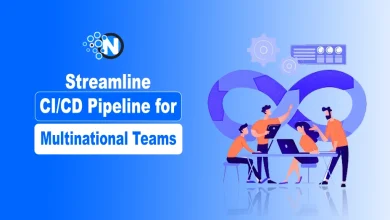How To Save Money On Software Development

Software development can be an unavoidable expense for most companies. In the current economic situation, many companies have seen their budgets shrinking, but the need for software development remains steady.
A study done by Deloitte in late 2022 showed that cost reduction is the top priority for CFOs. Over half of the CFOs included in the study (55%) said that cost reduction is now a strong priority. If you are aiming to cut down your skyward development costs without compromising quality, this article outlines some ways you can consider approaching this goal.
Consider Outsourcing
One of the biggest ways to reduce software development costs is by outsourcing. Partnering with a software agency can allow you to use their huge pools of resources and expertise. By outsourcing, you remove any geographical limitations, allowing you to work with the best agencies and individuals all over the world
Agencies in countries with lower labour costs will be able to provide you with software development services at a small percentage of the cost. Places like Eastern Europe and India are extremely tech-savvy, yet their agencies charge significantly lower fees than their European and North American counterparts.
However, be sure to spend some time vetting potential partners, as communication barriers could stall your project. Be sure that you and your agency have a language in common before you commit to anything.
Hire Contractors For Small Jobs
Some specific parts of your project might be better handled by contractors than agencies or full-time employees. You can hire certain talent or contractors to work for specific parts of your project. Since you contract them directly, there are no agency fees.
Contractors can be a more cost-efficient alternative to hiring full-time employees. You only pay for the work that is completed, as contractors are paid on a project basis. This means you can avoid the overhead cost associated with full-time employees including pensions, sick pay, holiday pay, and training.

Version 1, Version 2
This refers to starting with a basic version of your product and then improving upon it in subsequent releases, adding features and improving its design. This allows you to save money on software development, but also allows incremental development, which can be easier on your pockets. It allows you to reuse existing code instead of starting from scratch each time.
It also has the added bonus of getting your product to market faster, allowing you to generate revenue sooner. You can also use it as an opportunity to gather feedback on the basic version of a product to ensure that you are spending money developing a product that people actually want and need, instead of making assumptions.
Provide Detailed Requirements
Whether you are outsourcing or using your own in-house team, make sure you communicate your requirements as clearly as possible. This includes being clear about the scope, objectives, and function of your project.
This means you will not need to spend too much time on back and forth interactions. Clear goals allow your team to work efficiently and without excessive resource expenditure. You will therefore not need to bear the cost of additional working hours.
Use Prebuilt Features
If your goal is to save money, see if you can use templates and prebuilt features. This can save your development team a lot of time, as they will not have to write code from scratch.
Prebuilt features and templates will have already been performance tested, and they typically come at much lower price points than developing a product from scratch. This not only saves you money but time.
You can use as few or as many prebuilt features as suits you. For example, you might want your own custom website built from scratch, but you can still rely on prebuilt structures for widgets, components, and add-ons. There are plenty of high quality options that can be seamlessly integrated and customised.
Quality Assurance Specialist
If possible, try to involve a quality assurance specialist in the development of your project. This specialist will analyse your software throughout each stage of development to keep your final product free of bugs and errors. Although this can seem like an unnecessary inconvenience, it will save a lot of time and money in the long run.
If you wait until the last moment to test the quality of your product, you may have accumulated such a large number of errors that going back to the drawing board will cost you more money than hiring a quality assurance specialist.
Automate Your Testing
Automated testing refers to the process of executing your software tests without manual intervention. Manual testing requires time, effort, and money. By automating testing, your company might see improved speed and consistency.
Automations reduce the risk of human error, leading to higher accuracy and reliability. This means you run less of a risk of bugs or other issues, which can easily escape the notice of a human. Spotting these issues early will save you money later down the line.
Automated tests can be set up so that they run each time the code is tweaked. This means bugs can be spotted in the development process as soon as they arise. Fixing an error as soon as it crops up can be far cheaper and easier than trying to fix them later in the development cycle.
Finally, automated tests are reusable. Once you create a test, it can be run repeatedly without needing to be modified.
Reuse Code
Using existing code in a new project can be a cost-effective way to get projects finished faster. By reusing code, rather than writing new code from scratch, your team can save time and money. Reusing code speeds up the development process by allowing developers to focus on customising and improving existing code.
Another benefit of reusing code is standardisation. Reused code leads to more consistent code that has already been tested and reviewed. Standardisation also makes it easier to maintain the software over time, thereby reducing the risk of compatibility. This means you can spend less money and energy fixing issues later down the line.




